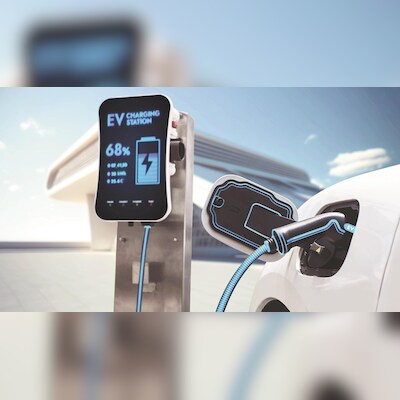In a step towards boosting adoption of electric vehicles (EVs) and expanding charging infrastructure across India, the government has released revised guidelines for the installation and operation of EV charging stations. This follows the launch of the Rs 10,900 crore PM Electric Drive Revolution in Innovative Vehicle Enhancement (PM E-DRIVE) scheme, which focuses heavily on building charging infrastructure across the country.
The scheme also addresses the anxiety of EV buyers by promoting the installation of Electric Vehicle Public Charging Stations (EVPCS). These EVPCS will be installed in select cities with high penetration of EVs and also on select highways. A total of 74,300 chargers will be installed, including 22,100 fast chargers for e-4W, 1,800 fast chargers for electric buses and 48,400 fast chargers for e-2W/3W. The outlay for EVPCS will be Rs 2,000 crore.
The guidelines, released on September 18 by the Ministry of Energy and Mines, aim to make the installation of public charging stations more financially viable through a new revenue-sharing model between the government and private players.
The guidelines will apply to a wide range of EV charging locations, including privately owned parking spaces and semi-restricted areas such as office buildings, educational institutions, hospitals and collective housing communities. The guidelines also apply to public spaces such as commercial complexes, railway stations, petrol stations, airports, metro stations, shopping malls, municipal car parks, motorways and expressways.
The Ministry of Power first issued the EV charging infrastructure rules on December 14, 2018. Since then, they have been revised five times to adapt to the changing needs of the EV sector. The most recent revision, in April 2023, introduced a cap on service fees charged by charging point operators (CPOs) at public charging stations.
The latest guidelines focus on several key objectives: boosting the adoption of electric vehicles by ensuring that charging stations are safe, reliable and accessible, and developing a robust national charging network, initially prioritising key locations.
To facilitate the installation of public charging stations, the guidelines propose that the government or public entities provide land at subsidized rates to private operators. In return, the entity owning the land will receive a share of the revenue, calculated based on the electricity consumed at the charging station, over a period of 10 years.
To further encourage EV charging, especially during daylight hours, the cost of electricity at charging stations will not exceed the “average cost of supply” until March 2028.
Rates will be lower during daylight hours (9am to 4pm), promoting the use of renewable energy for charging electric vehicles.
The guidelines also specify a minimum density of public charging stations. By 2030, there should be at least one charging station within a 1km x 1km grid in urban areas.
Along the highways, charging stations will be placed every 20 km for regular electric vehicles and every 100 km for heavy and long-range vehicles such as buses and trucks. Larger charging stations will be required to offer additional services such as toilets, drinking water and surveillance for the convenience and safety of customers.
Charging point operators can request electricity connections within specific timeframes as outlined in the Electricity (Consumer Rights) Rules, 2020. Timeframes vary by location: connections must be provided within 3 days in metropolitan areas, 7 days in municipal areas, 15 days in rural areas and 30 days in rural areas with hilly terrain. Where an extension of the distribution network or new substations is required, the connection must be provided within 90 days.
In terms of technical specifications, the guidelines call for the use of standardized open communication protocols, such as the Open Charge Point Protocol (OCPP). This will enable real-time tracking, booking and payment, ensuring a consistent and user-friendly experience at charging stations across the country.
The Ministry of Energy has also established data sharing protocols to maintain a national database of public charging stations, allowing users to easily locate charging points through mobile applications or online platforms.
First published: September 19, 2024 | 17:53 IS
Disclaimer:
The information contained in this post is for general information purposes only. We make no representations or warranties of any kind, express or implied, about the completeness, accuracy, reliability, suitability or availability with respect to the website or the information, products, services, or related graphics contained on the post for any purpose.
We respect the intellectual property rights of content creators. If you are the owner of any material featured on our website and have concerns about its use, please contact us. We are committed to addressing any copyright issues promptly and will remove any material within 2 days of receiving a request from the rightful owner.

